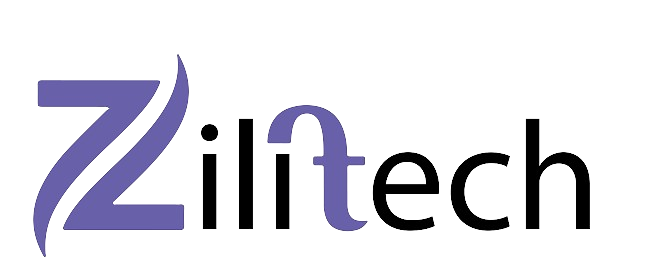Introduction to Website Speed Optimization
Website speed is the unsung hero of the internet. Ever clicked away from a website because it was loading too slowly? Yeah, me too. In today’s fast-paced digital world, having a website that’s zippy is crucial—not just for keeping visitors around but also for climbing the search engine ranks. So, buckle up! We’re diving deep into the world of website speed optimization. By the end of this, your site will be running faster than a cheetah on caffeine.
Why Website Speed Matters
The Impact on User Experience
Imagine walking into a store and waiting forever to be served. Frustrating, right? A slow website is no different. Users expect pages to load in a blink. If your site drags its feet, visitors will bounce faster than a rubber ball. According to Google, 53% of mobile users abandon sites that take longer than 3 seconds to load. Bottom line? Speed matters.
Search Engine Rankings and SEO
Speed isn’t just a user experience issue—it’s a ranking factor for search engines like Google. Faster sites get a thumbs-up from search engines, translating into better visibility and more traffic. According to Google’s PageSpeed Insights, slow-loading sites can find themselves slipping down the rankings, which is bad news for traffic and conversions.
How to Measure Website Speed
Essential Tools for Speed Analysis
Before you can make your site faster, you need to know where it stands. Here are some tools to put your site through its paces:
- Google PageSpeed Insights: Analyzes your site and provides actionable suggestions.
- GTmetrix: Offers detailed reports and recommendations.
- Pingdom: Monitors site performance and uptime.
Understanding Key Metrics
When analyzing your site’s speed, pay attention to these key metrics:
- First Contentful Paint (FCP): How long it takes for the first piece of content to appear.
- Time to Interactive (TTI): When your site becomes fully interactive.
- Speed Index: How quickly the contents of a page are visibly populated.
Optimizing Images
Choosing the Right File Format
Images are the usual suspects in slowing down your site. Choosing the right format can make a big difference. Use JPEGs for photos, PNGs for images with transparency, and SVGs for logos and icons.
Compression Techniques
Reduce image size without sacrificing quality. Tools like TinyPNG and ImageOptim can compress images effectively. For a more advanced approach, consider using WebP, a modern image format that provides superior compression for images on the web.
Implementing Lazy Loading
Lazy loading is like giving your site a shot of espresso. It only loads images when they enter the viewport, saving precious time. Implement it using the loading="lazy" attribute on your image tags or a JavaScript library like Lazysizes.
Minifying CSS, JavaScript, and HTML
What is Minification?
Minification is like tidying up your room—getting rid of all the unnecessary spaces and clutter. It reduces the size of your CSS, JavaScript, and HTML files, making them faster to download.
Tools for Minification
There are plenty of tools to help you minify your code:
- UglifyJS: For JavaScript.
- CSSNano: For CSS.
- HTMLMinifier: For HTML.
Leveraging Browser Caching
How Browser Caching Works
Browser caching stores parts of your site on the user’s device, so they don’t have to reload everything from scratch each time they visit. This is like giving your visitors a head start.
Setting Cache-Control Headers
To implement browser caching, set the Cache-Control headers in your server’s configuration. This tells browsers how long they should keep files before checking for updates.
apacheCopy code# Example Cache-Control Header
<filesMatch "\.(html|css|js|jpg|png)$">
Header set Cache-Control "max-age=2592000, public"
</filesMatch>
Using a Content Delivery Network (CDN)
Benefits of CDNs
A CDN is like having a relay team spread out around the world, ready to serve your site’s content from the closest location to the user. This reduces latency and speeds up load times.
How to Choose the Right CDN
Consider factors like:
- Coverage: Where are the CDN’s servers located?
- Performance: How quickly can the CDN deliver your content?
- Cost: What’s your budget? Popular options include Cloudflare, Akamai, and Fastly.
Reducing Server Response Time
Optimizing Your Server
A speedy server equals a speedy site. Ensure your server has adequate resources and is properly configured. Consider NGINX or Apache for web server software, and optimize settings for performance.
Choosing the Right Hosting Plan
Not all hosting plans are created equal. Shared hosting is cheap but can be slow. For better performance, consider VPS (Virtual Private Server) or dedicated hosting.
Implementing HTTP/2
Advantages of HTTP/2
HTTP/2 is like the upgrade your website didn’t know it needed. It offers faster and more efficient communication between your server and browsers by allowing multiple requests in parallel over a single connection.
How to Enable HTTP/2 on Your Server
Most modern servers support HTTP/2. Check your hosting provider’s documentation for instructions on enabling it. Usually, it’s as simple as updating your server’s configuration file.
Optimizing Web Fonts
Choosing Efficient Fonts
Web fonts can be a silent speed killer. Choose efficient fonts and only the styles and character sets you need. Tools like Font Squirrel can help you find optimized font files.
Font Loading Strategies
Use font-display: swap; in your CSS to avoid blank text while fonts are loading. This tells the browser to use a fallback font until the web font is ready.
Cleaning Up Your Code
Removing Unused Code
Think of unused code as clutter. It’s time to Marie Kondo your site. Use tools like PurgeCSS to remove unused CSS and ensure your JavaScript is only loading what’s necessary.
Streamlining CSS and JavaScript
Keep your CSS and JavaScript clean and lean. Use modular approaches to avoid loading entire libraries when you only need a few functions.
Optimizing Database Performance
Database Indexing
Indexing your database is like giving it a map. It helps your server find data faster. Make sure your queries are using indexes effectively.
Query Optimization
Write efficient queries and avoid fetching more data than you need. Use tools like phpMyAdmin to analyze and optimize your database queries.
Reducing Redirects
The Impact of Redirects on Speed
Every redirect adds a little delay. Too many redirects can turn a speedy site into a snail. Aim to minimize the number of redirects your users encounter.
Strategies to Minimize Redirects
Audit your site for unnecessary redirects and update links to point directly to the final destination. Use tools like Redirect Path to identify and fix redirect issues.
Utilizing Prefetching and Preloading
How Prefetching Works
Prefetching loads resources the user is likely to need next. This is like reading the user’s mind and getting ready for their next move.
Implementing Preload for Critical Assets
Use the rel="preload" attribute in your <link> tags to load key resources faster. This is especially useful for fonts and above-the-fold content.
Monitoring and Continuous Improvement
Tools for Ongoing Monitoring
Keep an eye on your site’s performance with tools like Google Analytics, New Relic, and Pingdom.
Adopting a Regular Maintenance Schedule
Regular maintenance is like tuning up your car. Schedule periodic reviews to catch and fix performance issues before they become problems.
Conclusion
Website speed optimization isn’t a one-time task—it’s an ongoing process. With these tips, you’re well on your way to creating a faster, more user-friendly website that ranks better and keeps visitors happy. Remember, every millisecond counts. Start optimizing today, and watch your site’s performance soar!
FAQs
1. What is the best tool for analyzing website speed?
There isn’t a one-size-fits-all answer. Popular tools include Google PageSpeed Insights, GTmetrix, and Pingdom. Each offers unique insights, so using a combination might give the best results.
2. How does a CDN improve website speed?
A CDN stores your site’s static content on multiple servers around the world, allowing users to download files from the nearest server. This reduces latency and improves load times.
3. What is lazy loading, and how does it work?
Lazy loading delays the loading of images and other resources until they are needed (i.e., when they appear in the viewport). This reduces initial load time and saves bandwidth.
4. How can I enable HTTP/2 on my website?
Most modern web servers support HTTP/2. You can enable it by updating your server’s configuration file. Check with your hosting provider for specific instructions.
5. Why is reducing redirects important for website speed?
Each redirect adds additional load time, as the browser has to follow the redirect to get to the final destination. Reducing redirects minimizes these delays and speeds up page load times.


